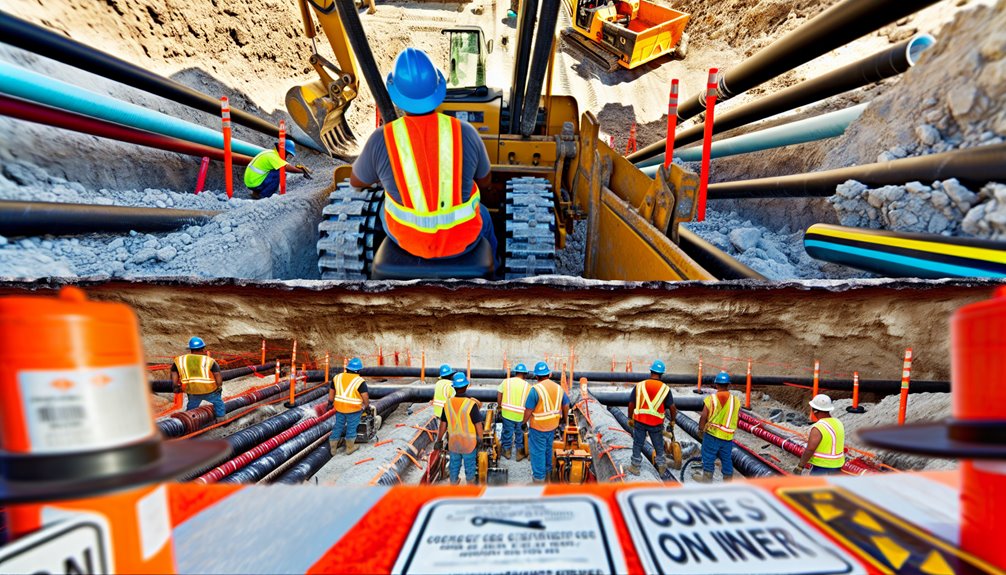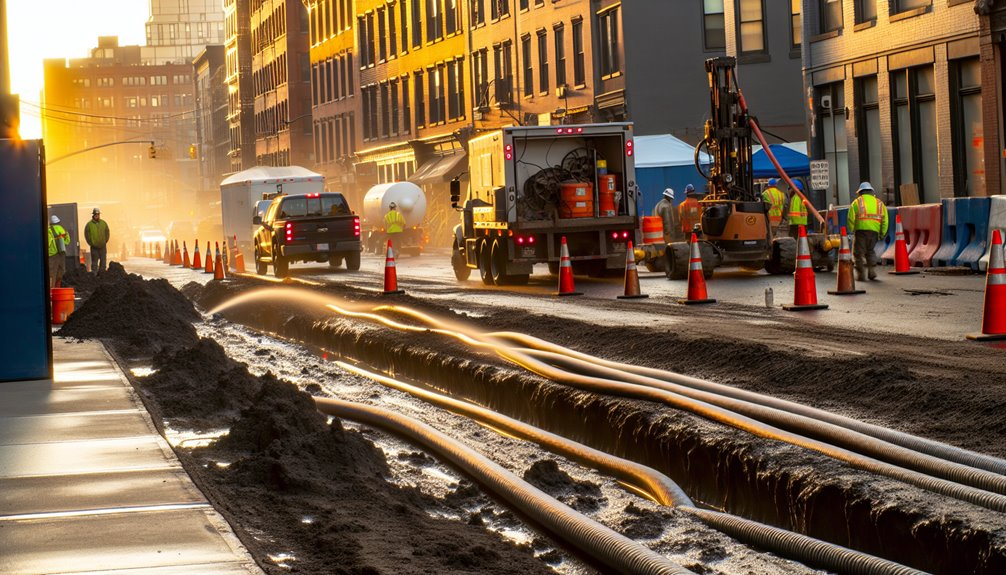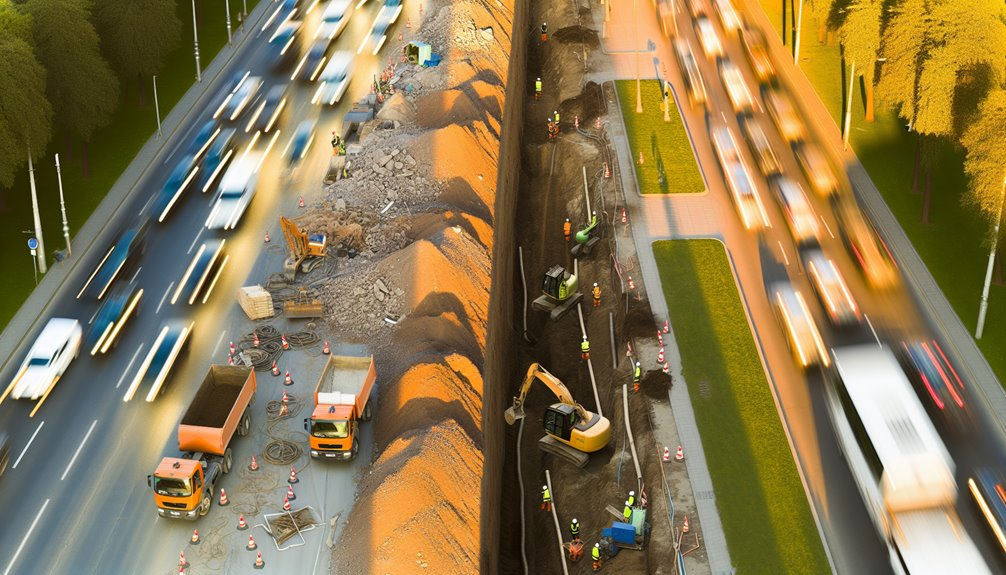As you explore the world of underground utility construction, it's essential to recognize the importance of robust safety protocols. These guidelines aren't just bureaucratic necessities; they're lifelines in environments where risks like cave-ins or utility strikes are real and potentially fatal. By adhering to strict safety measures and training programs, you guarantee not only your personal safety but also the efficiency and success of your entire project. So, what specific protocols could be life-saving in these subterranean settings? Let's investigate.
Identifying and Mitigating Risks in Subsurface Environments
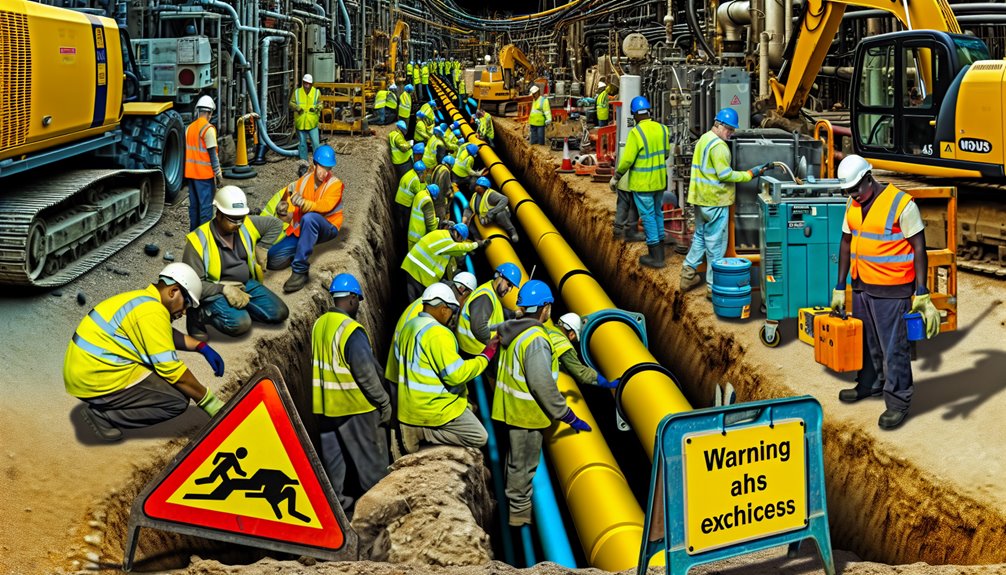
To effectively manage risks in subsurface environments, you must first conduct thorough geotechnical investigations to fully understand the underlying conditions. These subsurface investigations are essential for identifying expansive or corrosive soils, the depth to bedrock, and high groundwater levels, which are critical factors in risk assessment. Additionally, site characterization helps to outline the geometry and alignment of subsurface barriers, providing a clear picture of potential construction impacts. Monitoring techniques such as spirit leveling and InSAR are indispensable for observing land subsidence, ensuring you're ahead of any adverse settlement issues. Early assessment of ground conditions will also reveal geological weaknesses, enabling proactive measures to safeguard the integrity of your underground utility constructions. Furthermore, understanding acidic conditions and their potential risks is crucial for planning in areas with a history of mining activities.
Implementing Effective Training Programs for Construction Crews
After understanding the geological challenges of underground utility construction, it's equally important to focus on the human element of the operation.
You need to implement effective training programs that not only comply with OSHA and local regulations but also cater specifically to the needs of your crew.
Here are essential components to include:
- Hands-On Practice: Guarantee frequent on-site training under supervision to solidify safe work practices.
- Language Accommodations: Provide training materials and courses in the languages your crew speaks to enhance understanding and compliance.
- Regular Regulatory Updates: Keep training content current with the latest safety standards and construction protocols.
- Site-Specific Training: Tailor safety training to address the unique hazards of each project site, reinforcing relevant precautions and procedures.
For compliance and certification, ensuring the validity of training such as the Scaffold Supervisor certification which is valid for 4 years, is crucial in maintaining safety standards on construction sites.
The Role of Advanced Technology in Enhancing Safety
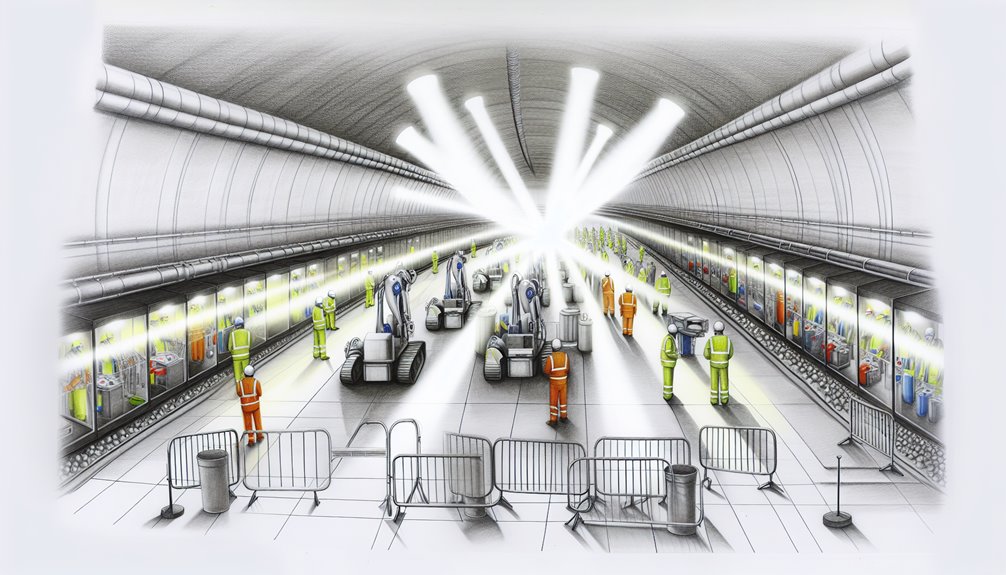
As underground utility construction evolves, integrating advanced technology has become crucial to enhancing safety. You'll find that real-time monitoring and data analysis, using sensors and cloud platforms, play critical roles in maintaining safe conditions by tracking air quality and other environmental factors.
This technology integration allows for the immediate identification and mitigation of potential hazards, considerably reducing risks.
Furthermore, advanced utility location and mapping technologies such as LIDAR and GPS, along with augmented reality, improve the accuracy and safety of underground operations.
The use of drones and robotics for smart monitoring not only speeds up surveys and inspections but also minimizes human exposure to potential dangers.
Embracing these innovations guarantees higher safety standards and a more secure working environment for you.
Creating and Enforcing Comprehensive Emergency Response Plans
While embracing advanced technology greatly boosts safety in underground utility construction, creating and enforcing thorough emergency response plans is equally essential.
You must be prepared for any incident, guaranteeing the safety of all personnel involved. Here's how you can establish a resilient emergency response framework:
- Identify and Prepare for Potential Hazards: Understand the specific risks, like chemical spills or pipeline ruptures, and equip your team with the necessary safety gear.
- Implement Proactive Warning Systems: Utilize advanced warning technologies to promptly alert your team.
- Conduct Regular Emergency Drills: Regular drills guarantee everyone knows their role in a crisis, enhancing response coordination.
- Engage in Continuous Training: Keep your team's skills sharp with ongoing training on emergency procedures and equipment use.
Stay vigilant and proactive to maintain a secure work environment.
Regulatory Compliance and Its Impact on Safety Standards
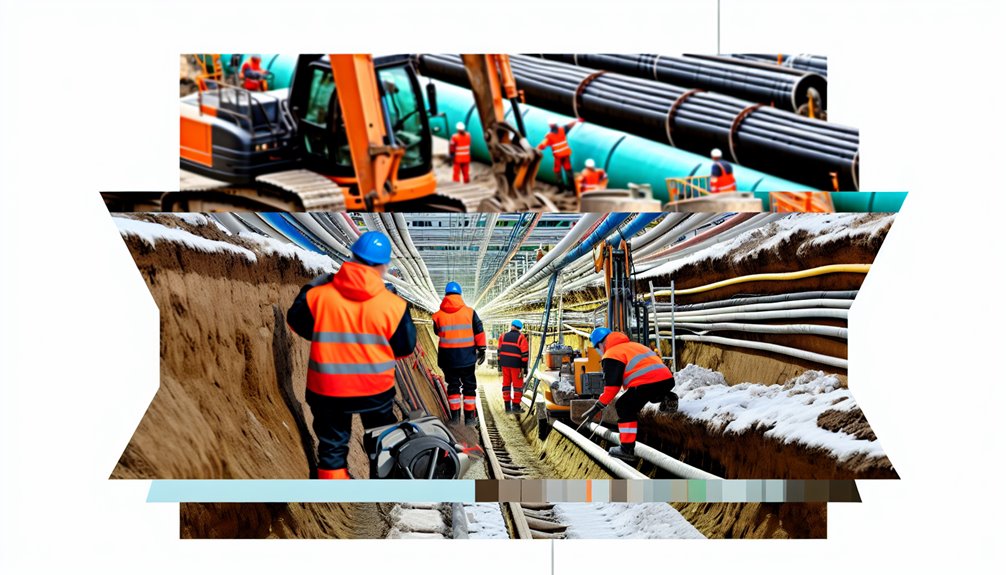
Understanding and adhering to regulatory compliance is crucial for maintaining high safety standards in underground utility construction. You must keep abreast of regulatory updates from OSHA, DOT's PHMSA, EPA, and adhere to the National Electric Safety Code to prevent severe consequences.
Compliance audits are critical tools in this process. They help you verify that safety protocols, such as proper worker training and the use of correct equipment, are in place and effective. These audits also guarantee that your traffic control and confined space entry plans meet legal requirements, safeguarding against fines, legal issues, and project interruptions.
Ultimately, compliance doesn't just protect your team; it preserves your company's reputation and guarantees ongoing operational success in a competitive industry.
Conclusion
As you work in underground utility construction, remember that adhering to safety protocols not only protects you but also guarantees the project's success. By identifying risks, undergoing rigorous training, leveraging technology, and following strict emergency plans, you enhance overall safety. Compliance with regulations is your backbone in maintaining these standards. Stay vigilant and committed; your role is essential in upholding a safety culture that shields everyone involved and serves the community efficiently.
If you're interested in learning more about safety practices and innovations in underground utility construction, I invite you to visit Boring Bros at boringbro.com. You can also give them a call at (954) 639-6167. They have a wealth of information to share, and I think you'll find it incredibly helpful!

